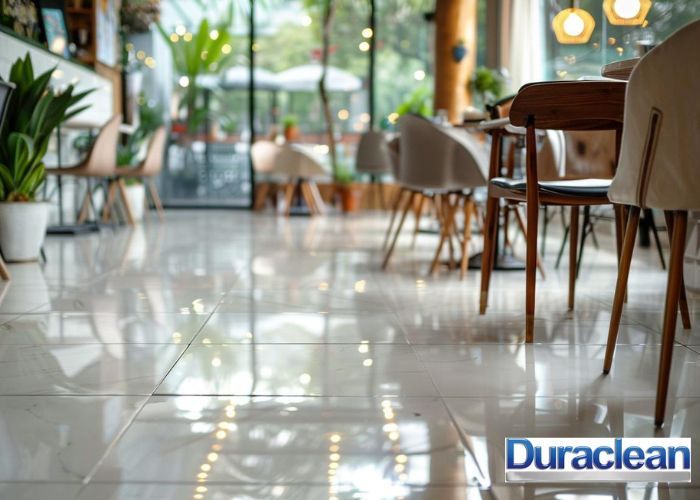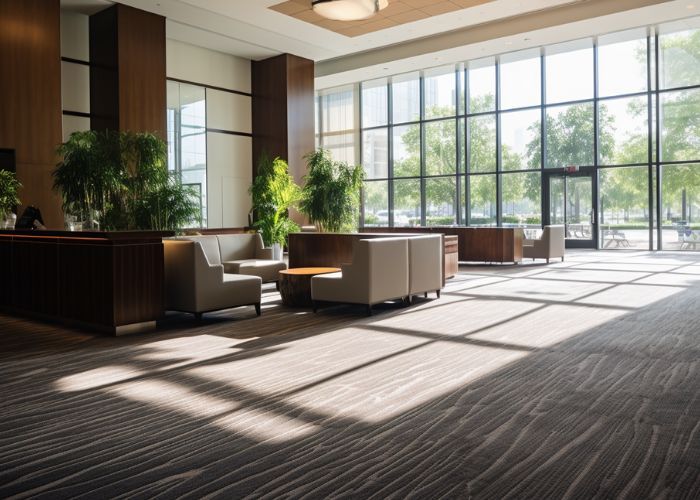
How to Combat Odors in Upholstered Furniture
Welcome to this helpful guide on understanding, managing and solving odors associated with upholstered furniture. From identifying the sources of the smells to finding natural solutions for neutralizing odors, to the occasions when professional treatments are needed, this guide contains all the advice and tips you need to keep your furniture smelling fresh.
Understanding the Sources of Upholstery Odors
Upholstery odors are often an unwelcome surprise when furniture is purchased or moved into a new home. Understanding the sources of these odors is the key to addressing unpleasant odors and preventing them from occurring in the first place.
The first source of upholstery odors is pets. Dogs, cats, and other animals can often leave behind traces of dander, fur, and bodily fluids on furniture that can give off a strong, unpleasant smell. To prevent odor caused by pets, regular vacuuming and washing of furniture and upholstery is necessary.
Another source of upholstery odors is moisture. Wet furniture, due to rain, spills, or an influx of humidity, can cause the development of mildew and mold. These musty smells come from spores that are growing due to the combination of fabric and moisture. To prevent moisture-induced odors from occurring, furniture should be allowed to dry out fully after any spills.
In addition, smoke residues from cigarettes, cigars, and pipe smoking can accumulate in furniture and upholstery fabrics, leaving behind a strong, stale smell. Furthermore, insect and rodent infestations can also contribute to odors, especially when the pests leave behind droppings and other remains in furniture and upholstery. To facilitate good air circulation and discourage insect infestations, furniture should be scrubbed and vacuumed routinely.
Finally, any synthetic materials used for upholstery such as fabric or foam can have its own particular odor due to its chemical makeup. These odors often dissipate with regular cleaning and airing out of the fabric. Similarly, leather can have its own distinct smell depending on the tanning and dying process used.
As a result, the key to eliminating or preventing upholstery odors is to understand the source of the odor. Regular cleaning and maintenance will go a long way in making sure that unpleasant smells do not accumulate in furniture and upholstery fabrics.
Natural Solutions for Neutralizing Nasty Scents In Your Upholstered Furniture
Upholstered furniture can quickly become odoriferous due to pets, spilled food or drink, smoke, and other air-borne contaminants. Fortunately, there are several natural solutions for neutralizing these strong smells and restoring your furniture to its original pleasant scent.
One of the best ways to freshen up furniture is through airing it out. Open windows, run fans, and turn on the air conditioner to circulate fresh air throughout the area. This is a great first step and will often help to reduce odors. However, for persistent smells, a DIY approach may be needed.
Baking soda is a common and effective natural deodorant that is widely used in volatile situations. It works by absorbing odors and leaving a light, fresh scent instead. To use baking soda to deodorize furniture, simply sprinkle some onto the surface, let it sit for several hours, and then vacuum it up. In addition, you can also make a more concentrated solution to increase its potency. Mix baking soda with water and then spread the paste onto the affected area using a damp cloth. After allowing it to dry, vacuum up the mixture.
Another method for neutralizing odors is to use vinegar. Simply spray it directly on fabrics or mix it with water and apply it the same way as the baking soda solution. Vinegar is very alkaline and helps to neutralize odors. It is a very powerful smell, however, that may need to be Masked with a room spray.
Finally, using essential oils to deodorize furniture is an easy and pleasant task. Simply mix a few drops of your favorite essential oil with water in a spray bottle and spray it directly onto fabrics or use a damp cloth to apply the mixture. The fragrance of the essential oil will linger in the air as an ongoing reminder of how nice your furniture can smell.
Overall, there are many natural solutions available for deodorizing upholstered furniture. Whether using baking soda, vinegar, essential oils, air circulation, or a combination of all of them, there is a method that will work and help to bring that clean, fresh smell back into your furniture. Consequently, your furniture will look and feel much more inviting.
Professional Upholstery Treatments: When to Call in the Experts
Professional upholstery treatments are an important factor in maintaining the value of furniture and ensuring a comfortable home environment. Upholstery fabrics are often made from natural fibers and, over time, they are subject to wear, fading, stains, and dirt accumulation. Regular maintenance helps prevent extensive damage, but every once in a while, professional cleaning and repair is necessary.
However, many homeowners may not be aware of the methods used to clean or restore fabrics and might be uncertain if and when to call professional cleaners and restoration specialists. The following is a list of necessary situations that may require professional help and advice.
Firstly, homes with pets need special attention. Pet owners should make certain to vacuum their upholstered furniture to remove any pet hair and dirt. On the other hand, if the sofa or chair has already been affected by animal hair, urine, or feces, then an upholstery professional should be called.
In addition, if the furniture has been stained by food or liquid, then just basic cleaning methods might not solve the problem. Similarly, fabrics that have been severely soiled should also be evaluated by a professional cleaner. Furthermore, if fading or rot has occurred, a professional service would be the best solution to restoring the beauty and life of the fabric.
For instance, because some fabrics are not colorfast, the wrong method of cleaning might cause unintentional damage. Similarly, an incorrect type of cleaning agent or conditioning product might also cause permanent damage to the upholstery fabric. Therefore, if a person needs advice on how to proceed with a particular fabric, it might be best to contact an upholstery professional.
Consequently, people should not attempt to repair any damage on their own without conferring with a professional. However, most home cleaning methods of light dirt and dust can usually be taken care of without the need to call an upholstery specialist.
Overall, while regular maintenance and cleaning is necessary to preserve furniture, sometimes professional services are needed to repair or restore upholstered furniture. Knowing when and why specialist services are necessary is an important factor in maintaining a comfortable and pleasant home environment.
Tips to Keep Your Furniture Smelling Fresh
When it comes to keeping your furniture smelling fresh, there are some easy tips to keep in mind. Firstly, vacuum furniture regularly to remove dust and debris. Moreover, use a soft brush attachment on the vacuum to ensure no damage is caused to the fabric. Furthermore, make sure to clean the seams with a cotton swab to remove dirt hiding in and around them. Additionally, steam furniture with warm water to kill dust mites, fungus, and bacteria that common fabric sprays miss. Nevertheless, do not forget to blot the furniture dry afterwards with a towel.
In contrast, using natural aromas such as fabric fresheners, lavender sachets and baking soda is a great way to keep your furniture smelling fresh. Baking soda is an excellent natural deodoriser and keeps furniture smelling good for a longer time. Similarly, fabric fresheners can be sprayed on rugs, couches and other large fabrics. For instance, Febreze fabric fresheners come in a variety of scents and work well for furniture made of fabrics.
Although fabric refresheners and natural aromas are good for keeping furniture fresh, it is important to be careful what kind of fabric you are using them on. Therefore, prior to using any fabric freshener or natural aromas, test an inconspicuous area for evidence of fading or discolouration. Furthermore, avoid aerosol sprays as they can seep into the fabric and become very difficult to remove.
Consequently, with diligence and basic maintenance habits, you can easily keep your furniture smelling fresh. Additionally, cleaning any spills or accidents quickly also helps protect the surface, preventing mould and mildew growth as well as pungent odours. Therefore, with a little maintenance, you can easily keep your furniture looking pristine and free of foul-smelling odours.
Final Thoughts
Understanding the sources of upholstery odors is the first step in neutralizing nasty scents in your furniture. Home remedies to refresh upholstered furniture include vacuuming and spot cleaning, using baking soda, and spritzing the fabric with fabric refresher. If these treatments don’t work, professional methods such as steam cleaning, stain removal, and odor removal can be tried. Lastly, preventative tips such as covering your furniture with sheets and using non-toxic cleaning products can help keep your furniture smelling fresh. With these tips in mind, homeowners should be able to keep bad odors off their furniture and maintain a pleasant smelling home.
Frequently Asked Questions
What are the most common causes of odors in upholstered furniture?
The most common causes of odors in upholstered furniture are pet and smoke odors, spills and sweat, mildew, and dust. Pet and smoke odors come from oils and other particles in the air that settle onto fabrics. Spills and sweat leave behind a residue that can cause a musty smell. Mildew occurs when there is excessive moisture in the air, and dust clings to furniture and absorbs odors.
Can baking soda really help in removing upholstery odors?
Yes, baking soda can help in removing upholstery odors. It is an effective and natural way to absorb and neutralize odors from the upholstery. Applying a thick, even layer of baking soda, letting the baking soda sit for at least 15 minutes, and using a vacuum cleaner to remove the baking soda can help with odor removal.
How often should I deep clean my furniture to keep odors at bay?
It is recommended that you deep clean your furniture at least once a month to prevent unpleasant odors from building up. Additionally, you may want to spot clean weekly to take care of any messes or spills that may occur.
Are air fresheners and fabric sprays safe for all types of upholstery?
No, air fresheners and fabric sprays are not always safe for all types of upholstery. Some fabric sprays and air fresheners contain chemicals that could damage certain types of upholstery. Therefore, it is important to read the instructions carefully and check the labels for any warnings about suitability for upholstery before using any product.
Call to Book Your Cleaning
Other Blogs You May Be Interested In
Categories








Leave a Reply